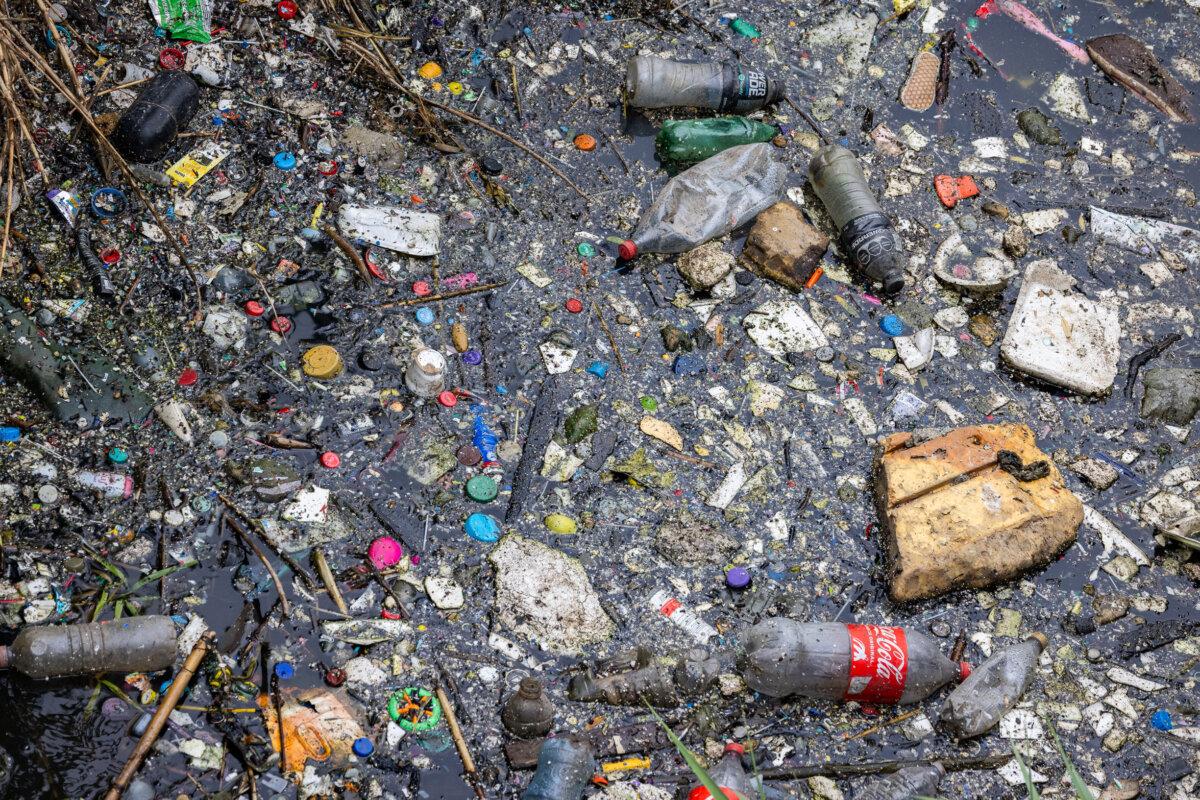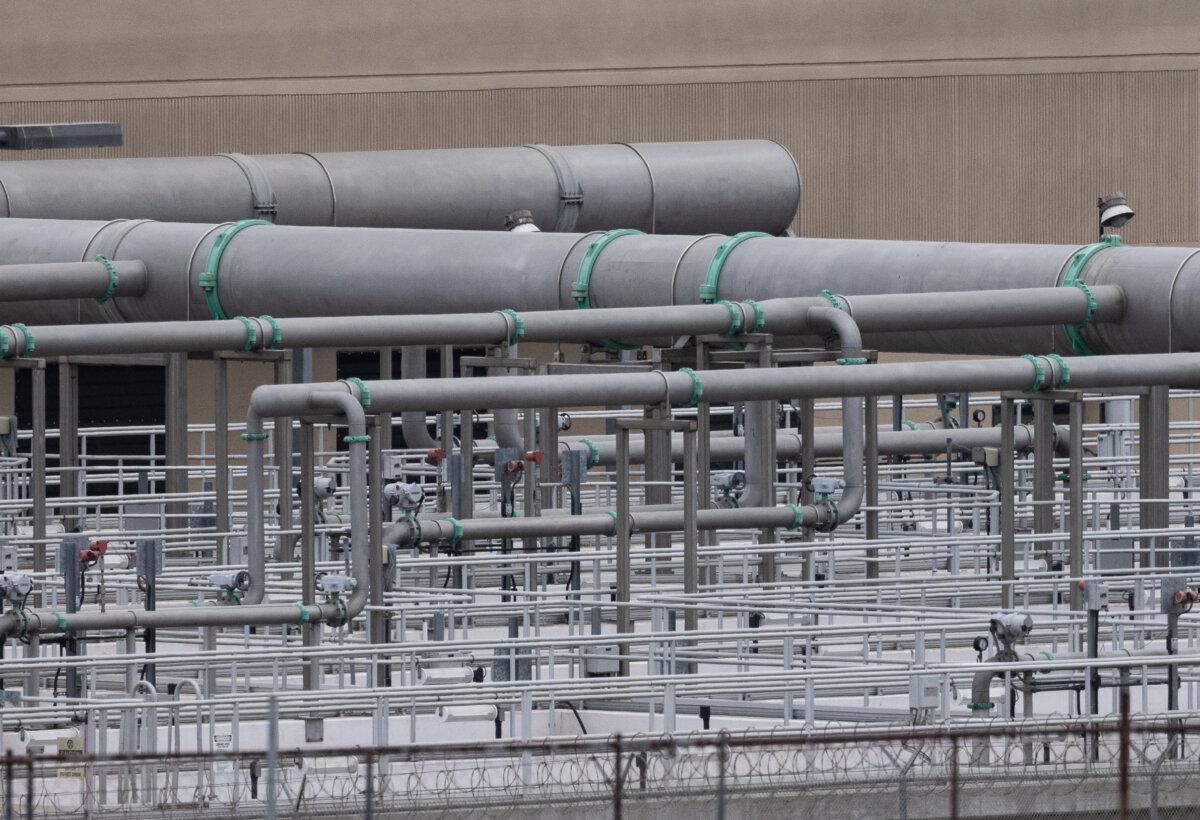The new chief of the U.S. Environmental Protection Agency (EPA) has expressed outrage over the Tijuana River sewage pollution that has affected San Diego border communities and generated health hazards for decades, recently causing a record of more than 1,000 consecutive days of beach closures.
“I was just briefed that Mexico is dumping large amounts of raw sewage into the Tijuana River, and it’s now seeping into the U.S.,” Lee Zeldin, EPA administrator, said in a post on social media platform X on the afternoon of March 8.
“This is unacceptable. Mexico MUST honor its commitments to control this pollution and sewage!”
A few hours after Zeldin’s post, a transboundary flow of wastewater mixed with heavy stormwater was reported to be entering the United States. The flow started at 1:30 a.m. on March 9, according to the U.S. Section of the International Boundary and Water Commission (USIBWC), the federal agency responsible for implementing boundary and water treaties between the United States and Mexico.
In a follow-up press release on March 10, USIBWC stated that it had met several times with Mexican officials and that preliminary information showed that “multiple unforeseen construction issues” at a project to replace a wastewater pipe in Tijuana had resulted in the accidental flows.
“I have made it very clear to Mexico the importance of avoiding future transboundary flows to the greatest extent possible during this very complicated construction project,” USIBWC Commissioner Maria-Elena Giner, who was appointed to head the agency in August 2021, said in the statement.
“We appreciate EPA Administrator Lee Zeldin’s attention to this issue and will keep him as well as all our stakeholders informed of Mexico’s progress,” the commissioner said.
The agency stated that the transboundary flows stopped mid-afternoon on March 9.
The ongoing project aims to replace Tijuana’s largest wastewater conveyance pipe, which has been plagued by leaks that have caused pollution flows in the past, according to the USIBWC. The project is funded by the United States, Mexico, and a Mexican bank, and the construction is being overseen by the Mexican Ministry of Defense.
USIBWC spokesperson Frank Fisher told The Epoch Times in an email that the USIBWC is in close contact with its Mexican counterparts at all levels. But for the new regular meetings, the focus will be exclusively on monitoring the pipe replacement project and any problems.
“We continue to work on four fronts to tackle the transboundary issue: Repairs to the South Bay plant; expansion of the plant; monitoring Mexico’s commitment on projects in Minute 328; and taking urgent action to ensure zero transboundary flows during the dry season,” Fisher said.
Minute 328 is a binational agreement signed in July 2022 by the United States and Mexican federal agencies to reduce wastewater in the Tijuana River watershed and Pacific Ocean through a suite of infrastructure projects on both sides of the border.

Trash builds up along the Tijuana River outside of San Diego, on Sept. 19, 2024. (John Fredricks/The Epoch Times)
California Leaders Ask EPA Chief for Help
Chula Vista, a South Bay city in San Diego County, declared a state of emergency in November 2024 because of the Tijuana River sewage crisis. Chula Vista Mayor John McCann told The Epoch Times via email that he had asked “a few South County leaders who are former colleagues of Zeldin” to convey the message and escalate the Tijuana River sewage crisis “to the highest level at the EPA.”
“The ongoing Tijuana sewage crisis is an urgent environmental and public health issue that requires immediate action,” McCann said in the email. “Accountability on the part of Mexico is essential. But we have to recognize that fully solving the crisis depends on a cooperative, binational approach.”
He said the most important first steps in tackling the crisis include persuading Mexico to act responsibly and securing at least $630 million of federal funding needed for infrastructure repair and expansion.
At the Jan. 16 Senate hearing on Zeldin’s nomination to be administrator of the EPA, newly elected Sen. Adam Schiff (D-Calif.) asked whether Zeldin would review a proposal that had been rejected by previous EPA leaders.
“Will you agree to review EPA’s January 7 decision to deny request to investigate the Tijuana River Valley for a potential Superfund designation?” Schiff asked. “Will you agree to review it and consider whether a different judgment should be reached?”
Zeldin answered, “Yes.”
The Superfund site designation petition was initiated by San Diego County Supervisor Terra Lawson-Remer in October 2024. One of the co-signers was Mayor Paloma Aguirre of Imperial Beach, the city most affected by the sewage crisis.
The petition asked the EPA to investigate and assess the hazardous materials in the Tijuana River Valley area in San Diego for its eligibility for inclusion in the EPA’s Superfund program, which could help bring federal resources to clean up hazardous materials in heavily contaminated regions.
Aguirre also sent two letters to Zeldin, one on Jan. 22 after the Senate hearing and another on March 3, after Zeldin was sworn in on Jan. 29 as the 17th EPA head. In both letters, Aguirre asked Zeldin for a new review of Tijuana River Valley’s Superfund designation.
“I was heartened by your agreement in your confirmation hearing to CA Senator Schiff’s request to review the EPA’s recent denial of Superfund designation for this environmental crisis,” she wrote in the letters. Aguirre also invited Zeldin to visit the region to see the disaster firsthand.
The Epoch Times reached out to Schiff, Lawson-Remer, and Aguirre for comment on Zeldin’s post but did not hear back by publication time.

A sewage treatment facility pumps in water from the Tijuana River outside of San Diego, on Sept. 19, 2024. (John Fredricks/The Epoch Times)
A Decades-Long Crisis
The majority of the Tijuana River’s 120-mile course is within the northern Baja California state of Mexico. Only about five miles of its lower end crosses the border from Tijuana to San Diego and empties into the Pacific Ocean.
The Tijuana River pollution has gone on for decades, but the crisis has become worse in the past few years because of Tijuana’s fast-growing population and the deterioration of water treatment infrastructure, said Phillip Musegaas, executive director of the nonprofit San Diego Coastkeeper, in an article published on the organization’s website on May 2, 2024.
In the past five years, more than 100 billion gallons of pollutants have been discharged into the Tijuana River. This has raised major concerns about water quality and public health in the San Diego region, according to a recent Community Assessment for Public Health Emergency Response report by the Centers for Disease Control and Prevention, compiled in October 2024 and released in January 2025.
California leaders at federal and local levels, as well as community advocates and organizations, have in recent years tackled the complex transboundary pollution issue by introducing new legislation, securing federal funding, filing lawsuits, giving out air purifiers to residents in affected communities, and other methods.













